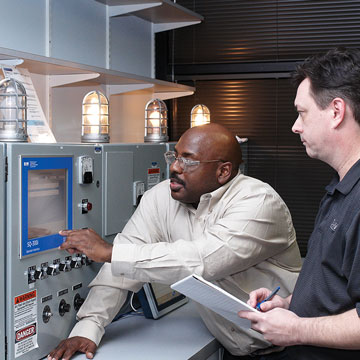Enhance Your Advancement Process: Engineering Support for Setting Out, Measured Building Surveying, and Beyond
Enhance Your Advancement Process: Engineering Support for Setting Out, Measured Building Surveying, and Beyond
Blog Article
Taking Full Advantage Of Source Allocation Via Strategic Evaluating Practices
In the world of strategic source allowance, the technique of evaluating stands as a crucial tool for organizations intending to maximize their efficiency and influence. By methodically collecting information and understandings, critical checking practices supply a roadmap for informed decision-making and resource circulation.
Significance of Strategic Evaluating Practices
Strategic checking techniques play a critical role in figuring out the reliable allowance of resources within organizations. By performing tactical surveys, firms can gather valuable information and insights that help in making educated choices pertaining to the allowance of resources such as manpower, budget plan, and time. These methods give a structured method to comprehending the present state of the company, identifying areas for renovation, and aligning resources with critical objectives.
One key value of strategic surveying methods is that they aid organizations prioritize their initiatives based on real-time comments from stakeholders. This makes certain that resources are routed in the direction of projects or tasks that have the greatest effect on attaining business objectives. Furthermore, critical surveys make it possible for companies to adapt to transforming market problems, client preferences, and internal abilities by continually reviewing and monitoring source allowance approaches.
Gathering Insights From Stakeholders
Including responses from stakeholders is necessary for companies applying calculated evaluating methods to effectively assign resources and drive decision-making processes. Stakeholders, consisting of employees, consumers, distributors, and community participants, hold valuable understandings that can considerably affect the success of critical efforts. Topographical Surveying. Involving with stakeholders via surveys, interviews, focus teams, and feedback sessions allows organizations to gain a deeper understanding of their concerns, preferences, and needs
By gathering insights from stakeholders, organizations can determine vital areas for improvement, prioritize source allotment based upon real needs, and align tactical goals with stakeholder assumptions. Entailing stakeholders in the decision-making process fosters a sense of ownership and commitment, leading to increased buy-in and support for strategic campaigns.
Moreover, stakeholders typically supply distinct perspectives and cutting-edge concepts that may not have been considered inside. By actively paying attention to and integrating stakeholder responses, organizations can boost their calculated surveying practices, make more educated decisions, and inevitably accomplish far better outcomes.
Utilizing Data-Driven Approaches
Making use of data-driven methods is paramount for organizations looking for to improve the efficiency of their source allowance approaches and decision-making processes. By leveraging data analytics and advanced modern technologies, organizations can draw out beneficial insights to optimize resource allotment, determine fads, and make educated decisions. Data-driven strategies make it possible for companies to designate resources based upon empirical evidence instead of intuition, bring about more reliable and effective outcomes.

In addition, organizations can utilize anticipating analytics to anticipate future resource requirements and allot resources proactively. construction surveys. By leveraging historical information and fad analysis, companies can expect demand changes and readjust their source appropriation methods accordingly. On the whole, welcoming data-driven strategies encourages organizations to make educated decisions that optimize resource appropriation performance and drive sustainable development
Identifying Locations for Enhancement
To enhance operational efficiency and efficiency, organizations have to prioritize pinpointing vital areas for improvement through rigorous evaluation and assessment. Recognizing areas for enhancement is a critical action in the procedure of optimizing resource allowance. By identifying where inadequacies or traffic jams exist within the company, decision-makers can route resources towards addressing these details areas. This targeted technique makes sure that efforts are concentrated on tasks that will produce the best roi.
One effective technique for recognizing locations for enhancement is performing regular performance examinations across different divisions or functions. Via these assessments, companies can collect useful insights right into areas that require attention or restructuring. In addition, seeking feedback from staff members whatsoever degrees of the organization can provide an unique perspective on possible locations for enhancement.
Furthermore, utilizing tools such as process mapping, SWOT analysis, and benchmarking can aid in recognizing areas for renovation by highlighting toughness, weaknesses, chances, and hazards within the company. By methodically taking a look at these factors, organizations can create an extensive understanding of where resources must be allocated to drive performance and effectiveness.
Practical Tips for Application

Conclusion
Finally, tactical surveying practices play an essential function in making best use of source appropriation by collecting understandings from stakeholders, making use of data-driven strategies, and determining locations for renovation. Carrying out practical suggestions for efficient surveying can lead to more educated decision-making and enhanced source allotment approaches. By focusing on critical surveying practices, companies can ensure that resources are alloted efficiently and efficiently to fulfill their goals and purposes.
In the realm of tactical source allowance, the technique of evaluating stands as a critical tool for companies aiming to maximize their efficiency and impact.Strategic evaluating methods play an essential function in identifying the reliable allocation of resources within organizations.Including feedback from stakeholders is crucial for organizations implementing strategic surveying techniques to properly allocate resources and drive decision-making processes.Moreover, organizations can use anticipating analytics to forecast future resource needs and designate sources proactively. By prioritizing strategic surveying practices, companies can make certain that sources are assigned effectively and properly see this to fulfill Full Report their objectives and purposes.
Report this page